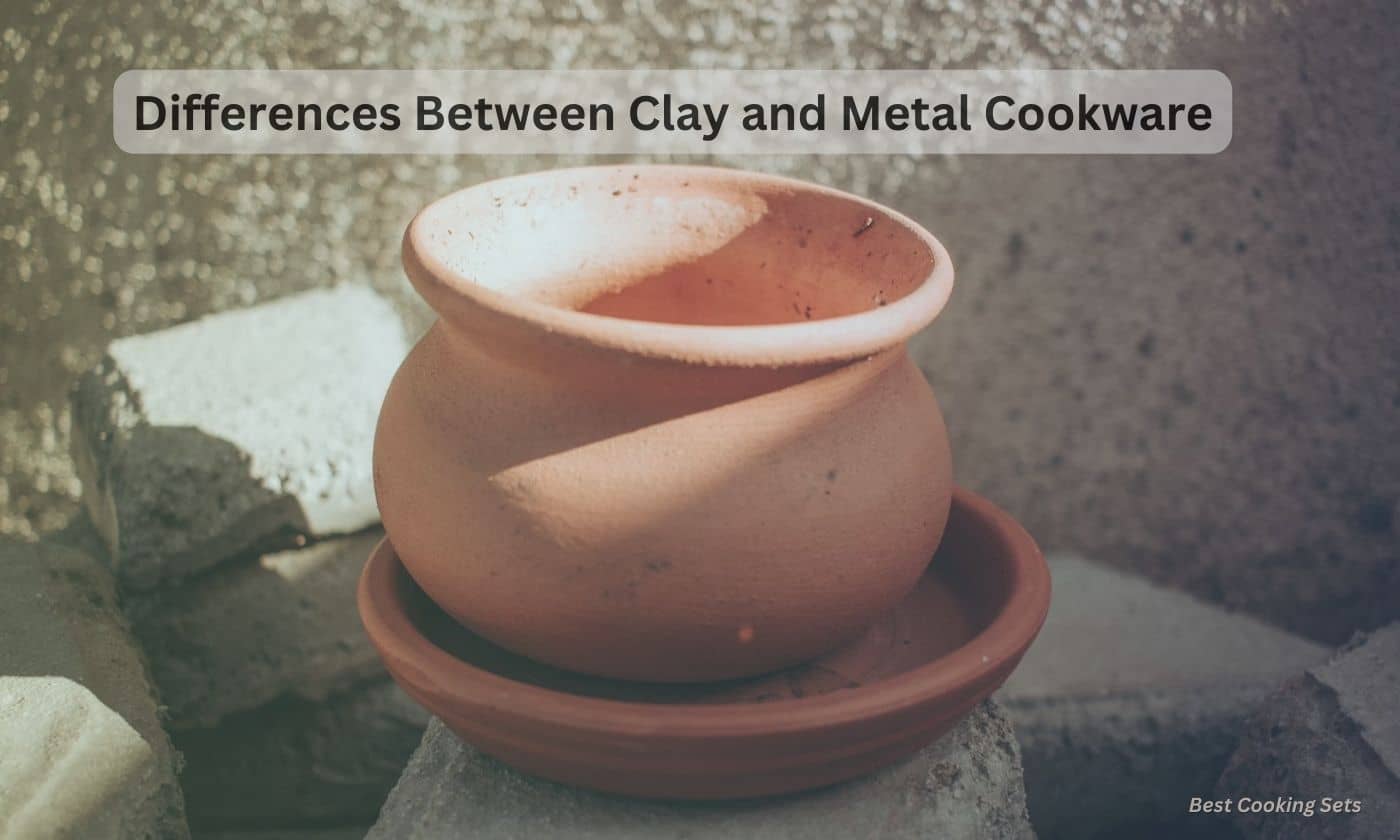Contents
Understanding Clay and Metal Cookware
Well, if you’re a home cook or a professional chef, you’ve probably pondered over the taste differences between clay and metal cookware, right? The reason behind this curiosity lies in the unique properties of these two materials. For starters, clay and metal cookware conduct heat differently, which has a direct impact on your food’s cooking process and, consequently, its taste and texture.
Think about it, Clay is a poor heat conductor and heats up slowly, providing a gentle and even heat. In the culinary world, this slow, steady heat is revered for dishes requiring long simmering times like stews or braised meats. It also aids in retaining the natural flavors and nutrients of the ingredients being cooked.
On the other hand, Metal counterparts, notably stainless steel, copper, and cast iron, are excellent heat conductors and heat up rapidly. This trait is beneficial for quick cooking operations like sautéing and stir-frying. However, the fast heat may sometimes lead to uneven cooking, especially if one is not constantly attentive.
Now, what does this mean for you and your kitchen adventures? Hold that thought as we journey further in our article where we will dive deeper into the aesthetics of cooking with clay and metal, followed by an exploration of the flavor dynamics of each cookware.
The Aesthetics of Cooking with Clay
Clay cookware’s rustic charm is undeniable. People are drawn to its earthy, organic allure, which harks back to simpler times. It’s all part of a bigger trend towards a more organic and homely feel in cooking and kitchen design. What makes clay cookware unique, especially compared to metal cookware, is that every piece is one of a kind. With its shades varying from light sandy hues to deep reddish-browns, clay cookware can fit into a variety of décor themes, from rustic farmhouse to modern minimalist.
Over the years, the ridges and patterns formed by regular use give the clay pots character – a documentation of the many meals cooked within. This just adds to the visual appeal, especially in open kitchen designs where pots and pans are on display.
Cooking with clay is not just about the flavor, it becomes an experience, a feast for the senses. Unlike the clinical appearance of metal cookware, clay pots exude something more personable. This is why you’ll find clay pots featured heavily in cooking shows and high-end restaurants.
They aren’t just functional, but also visually attractive.
• Clay cookware is unique in its aesthetic appeal. Each piece, with its varying shades of sandy hues to deep reddish-browns, is one-of-a-kind and can complement any décor theme.
• Over time, regular use forms ridges and patterns on the clay pots that add character to them. These marks are like a record of all the meals cooked within – adding an extra layer of visual interest.
• Cooking with clay isn’t just about preparing food; it’s an immersive experience for the senses. Unlike metal cookware, which often has a clinical appearance, clay pots have a more personable charm.
• Open kitchen designs often feature clay pots prominently due to their visual appeal. They’re not only functional but also visually attractive – making them perfect for display.
• Clay cookware features heavily in cooking shows and high-end restaurants because they offer something beyond functionality: aesthetics. Their rustic charm adds a touch of warmth and homeliness that enhances the overall dining experience.
• The trend towards organic and homely kitchen design makes clay cookware even more desirable. Its earthy allure harks back to simpler times when cooking was less about convenience and more about enjoying the process.
The Aesthetics of Cooking with Metal
Welcome to the shiny, sleek world of metal cookware! You might have spent a decent amount of time wondering about the clay vs. metal cookware debate. Trust me, you’re not alone! When it comes to aesthetics, metal cookware brings a certain charisma to your kitchen. Picture this – pristine stainless steel pots shimmering by the kitchen window, casting a sleek reflection everywhere. The monotony of brown clay cookware gets challenged by the brilliant sheen of metal – absolutely delightful!
These looks aren’t just for show, though. The sturdy, robust feel of metal pots and pans brings a pleasing balance in comparison to the fragile nature of their clay counterparts. Designed for functionality and durability, metal cookware is not just a pretty face but also a hard worker. There’s something incredibly satisfying about the clank of metal spoons against the pot, isn’t there? It’s like a culinary symphony, an audible testament to your cooking endeavors. The clay vs. metal cookware decision just got a lot more interesting, didn’t it? So, why not grab those shiny pots and start making your own culinary magic today!
The Flavor Dynamics of Clay Cookware
Clay cookware’s unique composition allows it to seep into the very soul of your food, imparting an earthy, rustic flavor that’s simply unmatched by other materials. The mystical interaction that happens when food cooks in clay is a culinary symphony of aromas, flavors, and sensation. Its porous nature means clay pots absorb the flavors of your meal and release them back into the food as it cooks. This cooking process is slow and gentle, allowing the flavors to meld perfectly.
Also, while using clay, certain nutrients like iron, calcium, phosphorous, and magnesium which are naturally contained in the clay, are soaked up by the food. This process not only enriches the taste but also increases the nutrient quotient. Each cooking session then, not only adds to your gastronomical delight but also enhances your health. Imagine relishing a perfectly simmered stew that offers a delightful medley of flavors and aroma, along with some essential nutrients. It’s an extraordinary culinary experience – one that is at the heart of the clay cookery.
For even more clay pot cooking secrets and a variety of recipes, be sure to explore the main post and delve deeper into this fascinating culinary world.
